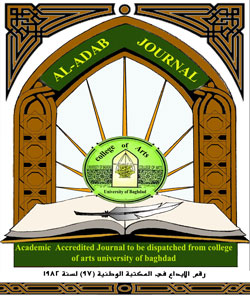Using of statistical analysis (Kringing) for measuring the groundwater pollution in Baghdad city and generalizing its maps
DOI:
https://doi.org/10.31973/aj.v0i134.875Keywords:
kringing, Baghdad, Water, groundwaterAbstract
The Study aims to explore which is the qualified technique for geostatistical analysis (Kringing) in measuring the groundwater pollution in Baghdad City and generalizing its maps, and identifying the most intense of groundwater pollution (SO2 ) and establishing mapping models in three scales that reflecting the levels for samples from groundwater (30) water Wells .
The water wells have been identified by using GPS that are mentioned in the study area by coordinates location, using the best spatial model for calculating the levels by using technical methods throughout applying classification method (Kringing feature) and drawing it mapping and generalize it for three scales 25000/1 , 50000/1 and 100000/1 and analysing the indictors and establishing a geographical database.
Downloads
References
Anselin , L, spatial statistical (modeling in GIS Invironment, In Maguire ,D.J,etal. Ceds)GIS, Spatial Analysis and modeling ,2005
George .F. jenks . generalization in Amman , Jordan statistical mapping annals of the association of American geographer , 1963.
Juma Muhammad Dawood, Foundations of Spatial Analysis in the Framework of Geographical Information Systems GIS, 1st Floor, Makkah Al-Mukarramah, Kingdom of Saudi Arabia, 2012.
Omar Abdullah Al-Qassab, Automated Circularization in Geographic Information Systems, Unpublished Master Thesis, University of Mosul, College of Education for Humanities, Department of Geography, 2010..
Zekra Rashid Rashid, Geographical Distribution of Selected Garages in Baghdad, Rusafa, Master Thesis (Unpublished), College of Education for Girls, University of Baghdad, 2002..
Downloads
Published
Issue
Section
License
Copyright and Licensing:
For all articles published in Al-Adab journal, copyright is retained by the authors. Articles are licensed under an open access Creative Commons CC BY 4.0 license, meaning that anyone may download and read the paper for free. In addition, the article may be reused and quoted provided that the original published version is cited. These conditions allow for maximum use and exposure of the work.
Reproducing Published Material from other Publishers: It is absolutely essential that authors obtain permission to reproduce any published material (figures, schemes, tables or any extract of a text) which does not fall into the public domain, or for which they do not hold the copyright. Permission should be requested by the authors from the copyrightholder (usually the Publisher, please refer to the imprint of the individual publications to identify the copyrightholder).
Permission is required for: Your own works published by other Publishers and for which you did not retain copyright.
Substantial extracts from anyones' works or a series of works.
Use of Tables, Graphs, Charts, Schemes and Artworks if they are unaltered or slightly modified.
Photographs for which you do not hold copyright.
Permission is not required for: Reconstruction of your own table with data already published elsewhere. Please notice that in this case you must cite the source of the data in the form of either "Data from..." or "Adapted from...".
Reasonably short quotes are considered fair use and therefore do not require permission.
Graphs, Charts, Schemes and Artworks that are completely redrawn by the authors and significantly changed beyond recognition do not require permission.
Obtaining Permission
In order to avoid unnecessary delays in the publication process, you should start obtaining permissions as early as possible. If in any doubt about the copyright, apply for permission. Al-Adab Journal cannot publish material from other publications without permission.
The copyright holder may give you instructions on the form of acknowledgement to be followed; otherwise follow the style: "Reproduced with permission from [author], [book/journal title]; published by [publisher], [year].' at the end of the caption of the Table, Figure or Scheme.












